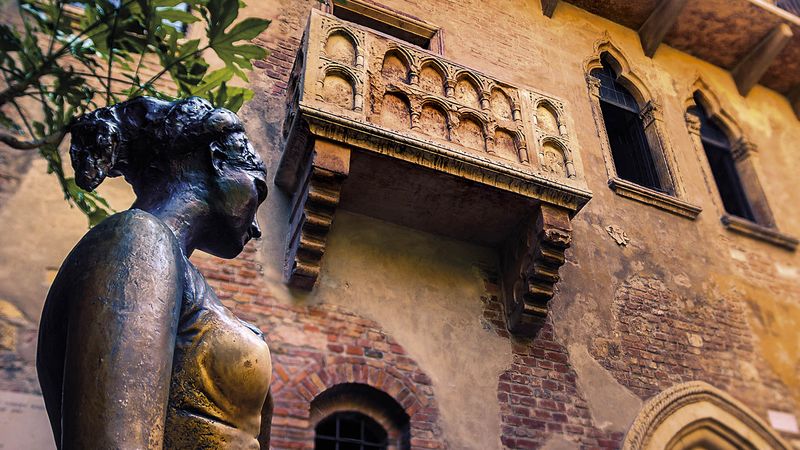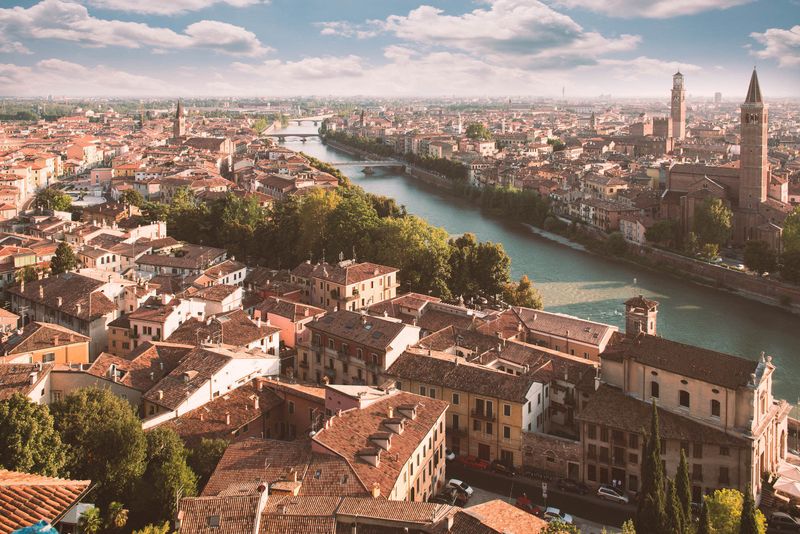Verona is called gate to the Southern Italy. On its streets guests are welcomed by Romance basilicas and Gothic cathedrals, palaces and a palace of times of the Renaissance, in gardens cypresses densely darken, and over the river Adige the ancient bridges giving to the city imperceptible similarity to Florence were stretched. But all magnificence with which centuries of history generously endowed Verona pales into insignificance with the main local association: it is Romeo and Juliette’s city. Mecca for romantics and poets.
The best-known lovers on light became true geniuses of the place here long ago. Their ghosts soar five centuries over Verona in which the set of ancient houses with balconies and from everyone in night silence and is heard love whisper.
What of these buildings belonged to Capuleti’s family?
However, to guess what of these buildings belonged to Capuleti’s family, it isn’t obligatory at all. In Verona there is the most real House of Juliette which is shown by all means to tourists. This structure of the 13th century located near Pyazz Erbe Square once belonged to the notable family Dahl Kappello which became a prototype of clan of Juliette.
The facade of the building is decorated with their coat of arms in the form of a marble hat (“capello” in translation from Italian “hat” means). By the way, there passed centuries before the local government attended to safety of the building.
Only in the thirties the XX century, after an exit to screens of the next film version of the Shakespearean tragedy, works on transformation of the decayed house into tourist object began.
The building was restored and even a little decorated, having given it romantic to a luster. Reconstructed including a courtyard with a legendary marble Balcony of Love. Here in 1972 the bronze statue of the heroine appeared.
In the nineties restorers were engaged also in internal furniture of the house, having recreated in it an authentic situation. Walls decorated original Renaissance frescos, in rooms the period furniture and other relics of Shakespearean times settled down.
Today in Juliette’s House there is a small museum devoted to Veronese lovers, their reflections in art, especially in cinema (the part of exhibits came from the classical movie of Zeffirelli here).
And the small court yard became the place of the real pilgrimage. All day long here it is full of guests from around the world. It is considered that the touch to Juliette’s statue (and, more precisely, to her right breast given a high polish) brings happiness in love.
Besides the Shakespearean heroine can leave the message. Until recently walls of the House of Juliette were entirely covered with inscriptions in all languages and the pasted notes. Today for these purposes the special computer is installed here.
There are also traditional mailboxes – for those who prefer to let into the secrets to paper. Every year here thousands of letters from the different countries come. People tell Juliette about the love experiences, share pleasures and grieves, ask for suggestions.
Also receive answers which on behalf of the Shakespearean heroine are written by volunteers. However, who knows whether Juliette inspires them?


























